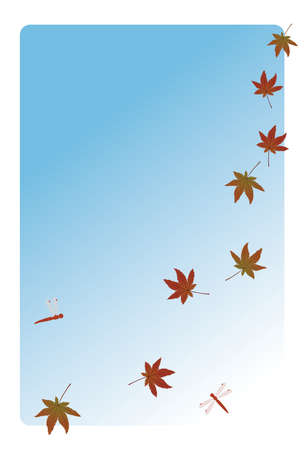1. Understanding the Autumn Equinox in the UK
The autumn equinox, which usually falls around the 22nd or 23rd of September, is a pivotal moment in the British calendar, both culturally and scientifically. This event marks the point when day and night are nearly equal in length across the UK, signalling the official transition from summer to autumn. As the tilt of the Earth’s axis moves the Northern Hemisphere away from direct sunlight, Britons begin to notice shorter days and a distinct drop in temperature—a change that has shaped local customs and daily routines for centuries.
In scientific terms, the equinox occurs when the sun crosses the celestial equator heading south, leading to a rapid shift towards earlier sunsets and cooler evenings. Culturally, this period has long been associated with reflection, preparation for winter, and harvest celebrations. Traditional events like harvest festivals—still popular in many villages and towns—are rooted in gratitude for summer’s abundance and anticipation of the colder months ahead. The autumn equinox thus serves as both a natural phenomenon and a cultural touchstone, inviting people across the UK to pause and consider how best to balance their lives as daylight wanes and a new season begins.
Seasonal Shifts: What Changes in British Life?
As the autumn equinox arrives and daylight hours wane, British life undergoes a subtle but significant transformation. The transition from late summer to autumn brings with it not just cooler temperatures and golden leaves, but also a host of lifestyle adjustments and cherished traditions. Many people notice their daily routines shifting: mornings grow darker, evenings arrive earlier, and there’s a collective inclination to spend more time indoors. Work commutes often mean leaving home in the half-light and returning after sunset, prompting changes in exercise habits, meal times, and even social gatherings.
Daily Routines
The shortening days encourage earlier bedtimes and a focus on home comforts. People swap salads for hearty stews and soups, reflecting the change in available produce and the natural desire for warmth. Public transport becomes busier as fewer opt for cycling or walking in unpredictable weather. There is also a notable uptick in indoor hobbies such as baking, reading, or DIY projects.
Local Festivals and Traditions
Autumn is rich with community events that mark the season’s arrival. The UK celebrates Harvest Festival, a tradition rooted in gratitude for agricultural abundance. Schools, churches, and local groups gather food donations for those in need, reinforcing a sense of community support. As October draws near, excitement builds for Bonfire Night (Guy Fawkes Night), when fireworks light up the skies and neighbours come together around crackling fires to commemorate history.
| Tradition/Festival | Main Activities | Typical Date |
|---|---|---|
| Harvest Festival | Food collections, church services | Late September – Early October |
| Bonfire Night | Fireworks, bonfires, parkin cake | 5 November |
Countryside Walks and Seasonal Scenery
The British countryside comes alive in autumn. Woodland paths are carpeted with fallen leaves, making this a favourite time for countryside walks or rambling. Many families plan outings to parks or nature reserves to enjoy conker collecting, spotting migrating birds, or simply taking in the dramatic colours of changing foliage. This ritual not only connects people with nature but also offers a mindful pause before winter’s demands set in.
The Subtle Art of Balancing Change
In summary, autumn in the UK prompts both practical adaptations and cultural celebrations. Whether adjusting personal routines or joining longstanding festivities, these seasonal shifts offer opportunities to embrace balance—between activity and rest, tradition and innovation—as the days gently grow shorter.

3. Embracing Cosy Comforts Indoors
As the autumn equinox ushers in noticeably shorter days across the UK, there is a distinct national affection for all things cosy. Britons have long mastered the art of transforming their homes into havens of warmth and comfort when the evenings draw in. This cultural inclination isn’t just about staying warm; it’s an active embrace of comfort, connection, and tradition during the darker months.
The Ritual of Tea
No discussion of British indoor cosiness would be complete without mentioning tea. As daylight fades, many households instinctively reach for the kettle. Brewing a cup of tea—whether classic English Breakfast or a spiced herbal blend—becomes both a daily ritual and a simple pleasure that signals relaxation and togetherness. Pairing your cuppa with a homemade treat, like freshly baked scones or a Victoria sponge, further amplifies that sense of contentment.
Baking as a Seasonal Tradition
Baking is another cherished pastime as autumn arrives. The aroma of bread or apple crumble wafting from the kitchen helps create a nurturing atmosphere. For many, baking is more than just a way to fill the pantry—it’s an invitation to slow down and savour home life. It offers an opportunity to gather family or friends around the table, sharing not only food but also stories and laughter as the world outside grows chillier.
Soft Lighting for Warmth
Lighting plays a pivotal role in crafting that quintessentially British snug environment. Swapping out harsh overhead bulbs for warm lamps, fairy lights, or even candles can transform any room into a sanctuary from the gloom outside. The soft glow soothes and invites you to linger over a good book or simply enjoy quiet moments at home.
These familiar comforts—tea, baking, gentle lighting—are more than mere habits; they are time-tested strategies for navigating autumn’s darker days with grace and balance. By leaning into these traditions, we not only weather the season but find genuine joy and peace within our own four walls.
4. Maintaining Wellbeing as Daylight Fades
As the daylight hours dwindle across the UK during the autumn equinox, many of us feel the subtle shift in mood and energy. The transition to shorter days can affect both our mental and physical wellbeing, making self-care especially important. Here are some practical strategies for Britons to stay resilient and positive as autumn deepens.
Managing Seasonal Affective Changes
The drop in sunlight can trigger seasonal affective disorder (SAD) or simply leave you feeling a bit low. Its essential to recognise these changes early on and respond with kindness towards yourself. Consider incorporating light therapy lamps into your routine, especially if you find mornings particularly tough. Keeping regular sleep and waking patterns also helps stabilise mood and energy levels.
Staying Active Despite Shorter Days
Physical activity remains one of the best ways to boost mood and combat sluggishness. Even if outdoor exercise feels less inviting, try brisk walks during lunch breaks or gentle stretching at home. Many local leisure centres offer indoor swimming, yoga, or fitness classes—ideal for keeping active when it’s drizzly outside. Below is a quick guide to maintaining an active lifestyle during autumn:
| Activity Type | Best Time | UK Tips |
|---|---|---|
| Outdoor Walks | Midday for maximum daylight | Choose local parks or National Trust trails; bring a waterproof jacket |
| Indoor Exercise | Evenings after work | Try online yoga or join a gym class |
| Cycling | Weekend mornings | Stick to well-lit cycle paths; wear reflective gear |
Enjoying Crisp Autumn Air Mindfully
The British autumn has its own unique charm: crunchy leaves underfoot, misty mornings, and the scent of bonfires. Embracing these moments mindfully can be uplifting. Take time to savour a hot cuppa outdoors or plan short countryside outings to soak up the scenery. Connecting with nature—even in small doses—can help ease feelings of isolation that sometimes arise as evenings draw in.
Mental Health Support Resources
If you’re finding things particularly tough, remember there’s support available. Many communities have local mental health charities or NHS services tailored for seasonal changes. Don’t hesitate to reach out, whether through talking therapies, helplines, or even just confiding in a friend.
A Gentle Reminder
Pacing yourself, staying connected with others, and enjoying simple seasonal pleasures go a long way in supporting wellbeing through autumn’s transitions.
5. Balancing Work, Study, and Leisure
As the days grow shorter and autumn settles in across the UK, it becomes increasingly important to reassess how we balance our daily responsibilities. The Autumn Equinox acts as a gentle reminder to reflect on our routines—especially when it comes to work, study, and personal time. With less daylight, it’s easy for productivity to wane or for downtime to slip away unnoticed.
Adapting Routines for Seasonal Change
The shift in daylight hours can have a subtle yet significant effect on energy levels and concentration. To align with the changing season, consider adjusting your work and study schedules to prioritise tasks during the brightest parts of the day. For many in the UK, this might mean starting earlier or setting aside focused periods mid-morning when natural light is most abundant. This approach not only boosts productivity but also helps stave off the sluggishness that can come with darker afternoons.
Maintaining Productivity Without Overdoing It
It’s tempting to fill up every moment with work or revision as deadlines loom ahead of winter breaks, but overcommitting can quickly lead to burnout. Instead, set realistic daily goals and use tools like the Pomodoro Technique—working in short bursts with regular breaks—to keep your mind sharp without feeling overwhelmed. If possible, take meetings or reading sessions by a window; even a bit of British autumn sunshine makes a difference.
Honouring Downtime and Leisure
Equally vital is safeguarding time for yourself. Whether it’s a brisk walk through fallen leaves in a local park, settling down with a cuppa and a good book, or catching up with mates at the pub after work, these moments of leisure are essential for wellbeing. The cultural rhythm of the UK often leans into cosiness as nights draw in—think hearty suppers, board games, or simply lighting a candle to mark the evening.
By thoughtfully balancing work, study, and downtime during autumn’s transition, you can maintain both motivation and morale as the season shifts. Embracing this change not only keeps you productive but also ensures that you savour what makes this time of year uniquely rewarding in Britain.
6. Celebrating Autumn Traditions
As the autumn equinox settles over the UK, it brings with it a tapestry of beloved traditions that offer both comfort and connection during the shorter days. One of the most eagerly anticipated events is Bonfire Night, or Guy Fawkes Night, on the 5th of November. Across towns and villages, communities gather around crackling bonfires and vibrant firework displays, commemorating history while enjoying the warmth of shared experience. Preparations often begin weeks in advance—building effigies, collecting wood, and planning gatherings that light up the darkening evenings.
Harvest festivals are another cherished custom at this time of year. Schools, churches, and local groups come together to celebrate nature’s bounty, decorating spaces with baskets of apples, sheaves of wheat, and colourful gourds. It’s common to donate food to local charities during these festivals, reinforcing the spirit of gratitude and community support as autumn deepens.
Of course, no British autumn would be complete without indulging in classic seasonal foods. From piping hot jacket potatoes enjoyed by the bonfire to hearty servings of apple crumble and sticky toffee pudding, these comforting dishes reflect both tradition and the need for warmth as temperatures drop. Many also look forward to spiced drinks—mulled cider or a simple cup of tea savoured while watching leaves fall outside.
Embracing these rituals not only grounds us in our heritage but also provides a sense of balance as daylight fades. Whether joining neighbours for festivities or simply relishing home-cooked favourites with family, celebrating autumn traditions is a meaningful way to mark the transition into winter and cherish the unique character of British life at this time of year.


